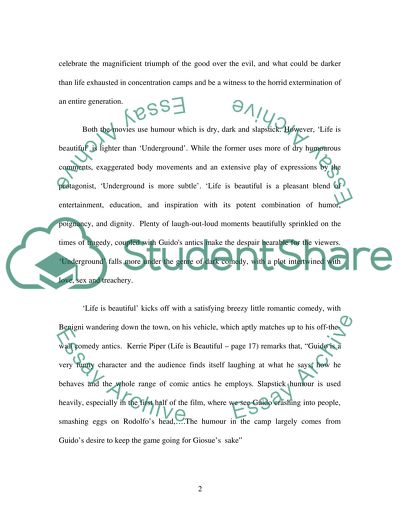Cite this document
(“Film study: Compare the role of comedy in Life is Beautiful and Essay”, n.d.)
Film study: Compare the role of comedy in Life is Beautiful and Essay. Retrieved from https://studentshare.org/miscellaneous/1574044-film-study-compare-the-role-of-comedy-in-life-is-beautiful-and-underground
Film study: Compare the role of comedy in Life is Beautiful and Essay. Retrieved from https://studentshare.org/miscellaneous/1574044-film-study-compare-the-role-of-comedy-in-life-is-beautiful-and-underground
(Film Study: Compare the Role of Comedy in Life Is Beautiful and Essay)
Film Study: Compare the Role of Comedy in Life Is Beautiful and Essay. https://studentshare.org/miscellaneous/1574044-film-study-compare-the-role-of-comedy-in-life-is-beautiful-and-underground.
Film Study: Compare the Role of Comedy in Life Is Beautiful and Essay. https://studentshare.org/miscellaneous/1574044-film-study-compare-the-role-of-comedy-in-life-is-beautiful-and-underground.
“Film Study: Compare the Role of Comedy in Life Is Beautiful and Essay”, n.d. https://studentshare.org/miscellaneous/1574044-film-study-compare-the-role-of-comedy-in-life-is-beautiful-and-underground.


